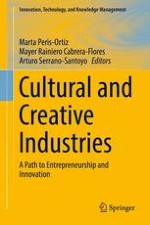2019 | OriginalPaper | Chapter
2. Creative Arts Industries: Analysis of Scientific Production
Authors : Claudia Patricia Maldonado-Erazo, María de la Cruz del Río-Rama, Carlos Rueda-Armengot, Amador Durán-Sánchez
Published in: Cultural and Creative Industries
Publisher: Springer International Publishing
Activate our intelligent search to find suitable subject content or patents.
Select sections of text to find matching patents with Artificial Intelligence. powered by
Select sections of text to find additional relevant content using AI-assisted search. powered by
